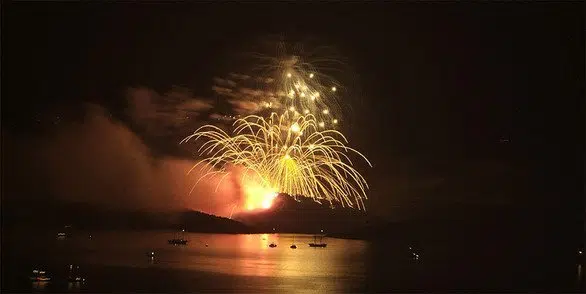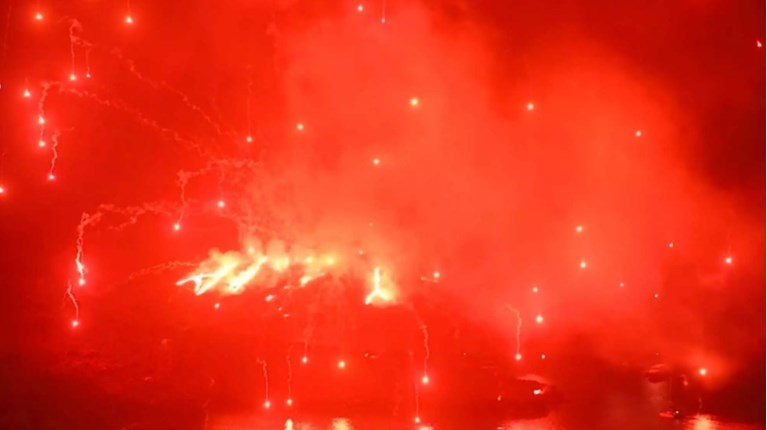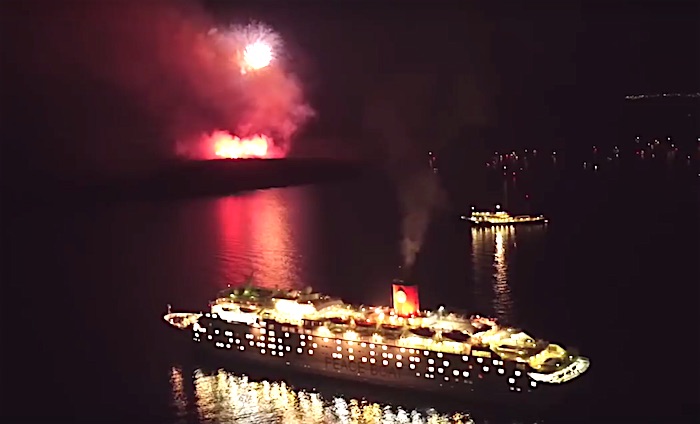
After a two-year hiatus due to the pandemic, the ”Ifestia Festival” or ”Volcanoes Festival” in Santorini is back and took place on Sunday, September 18, 2022.
A spectacular compilation of fireworks and fires caused the volcano to ”erupt” again in a simulation of the real volcanic eruption that had originally formed Santorini, and the images captured were beyond spectacular and more enchanting than ever.
The re-enactment of the volcanic explosions began at sunset at approximately 8:00 p.m. and was once again a unique spectacle for the residents and visitors to Santorini and Thirasia.

The ”Volcanoes Festival,” a simulation of the Minoan eruption
The Santorini volcano is one of the largest underwater active volcanoes in the world, and it’s perhaps the only volcano whose caldera reaches the sea. Its greatest eruption occurred during the Minoan Bronze Age approximately 3,600 years ago. At the time, the entire center of the circular island was submerged in the sea during the terrible volcanic explosion. The eruption resulted in a tidal wave that literally wiped out the advanced civilization of Minoan Crete only seventy miles south of Santorini.
The huge mass of pumice ejected during the volcanic eruption covered a large area of the surface of the sea and was subsequently washed ashore to higher levels by the tsunami caused by the eruption. In most of the surrounding areas of the Aegean, pieces of pumice were found that seem to have drifted to the surface of the sea.
Pumice was also found on the northern coasts of Crete, as well as on the coasts of Anafi, Lemnos, Paros, Samothrace, Cyprus, and even Israel. Experts have discovered traces of this explosion even as far as the Nile Delta in Egypt.
The ”Volcanoes Festival” is a representation of this historical event. Images, colors, and sounds once again created an unforgettable and aesthetically pleasing experience to those present.

Santorini a dormant but active volcano
Santorini is the most active volcanic center in the South Aegean Volcanic Arc, though what remains today is chiefly a water-filled caldera. The volcanic arc is approximately five hundred kilometers long and twenty to forty kilometers wide. Numerous minor and medium-sized but mainly effusive eruptions have resulted in the dark-colored lava shields of Nea and Palea Kameni inside the caldera. The region first became volcanically active three to four million years ago.
The last eruption was in 1950, and, nowadays, only fumarole activity, primarily inside the recently active craters, occurs. It is said that the huge Minoan eruption of Santorini in the seventeenth century BC may have also inspired the legend of Atlantis.
Check out the impressive display of fireworks in the video by Cyclades24 below.
See all the latest news from Greece and the world at Greekreporter.com. Contact our newsroom to report an update or send your story, photos and videos. Follow GR on Google News and subscribe here to our daily email!



